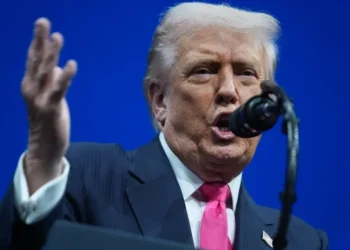Why Apple Still Isn’t Making iPhones in the U.S.—Even with Trump’s Trade Pressure
Despite years of political pressure and heavy tariffs from former President Donald Trump’s administration, Apple remains firmly committed to manufacturing its iPhones outside the United States—and that’s unlikely to change anytime soon.
The Trump administration believed that a barrage of tariffs on Chinese imports—now standing at 145% on some products—would force Apple to shift iPhone production to the U.S. But analysts and industry insiders agree: that move is still economically unrealistic.
Apple has relied on its China-based supply chain for decades, building an intricate manufacturing network since the 1990s. Uprooting that system would take years, cost billions, and drastically increase the price of an iPhone—potentially tripling it.
“The concept of making iPhones in the U.S. is a non-starter,” said Dan Ives, a tech analyst at Wedbush Securities.
He estimates the cost of a U.S.-made iPhone would jump from $1,000 to over $3,000.
Late Friday, the Trump administration announced it would exclude electronics, including smartphones, from the current tariff list—for now. But future changes remain on the table, and the pressure continues.
One major obstacle? Skilled labor.
Back in 2017, Apple CEO Tim Cook cast doubt on whether the U.S. even had the workforce to support iPhone production.
“In the U.S., you could have a meeting of tooling engineers and I’m not sure we could fill the room,” Cook said.
“In China, you could fill multiple football fields.”
While U.S. officials like Commerce Secretary Howard Lutnick still predict manufacturing will shift back home, experts see that as unrealistic under current conditions.
In an attempt to soften Trump’s stance, Apple announced in February it would invest $500 billion in the U.S. and hire 20,000 people through 2028. But the money won’t go toward iPhone production. Instead, it’s funding AI and cloud infrastructure projects like a new data center in Houston.
White House Press Secretary Karoline Leavitt pointed to that investment as a sign of faith in U.S. capabilities, saying,
“If Apple didn’t think the United States could do it, they probably wouldn’t have put up that big chunk of change.”
Still, that “chunk of change” isn’t going toward assembly lines for iPhones.
Since the latest round of tariffs began on April 2, Apple’s stock has dropped 15%, wiping out roughly $500 billion in market value. While the company hasn’t officially responded to the tariff changes, CEO Tim Cook may address the issue during Apple’s quarterly earnings call on May 1.
Analysts believe Apple may eventually raise iPhone prices to protect its profit margins, which are already feeling pressure from the trade conflict. For now, it can absorb the costs thanks to booming revenue from services like iCloud, Apple Music, and the App Store—bringing in $96 billion last fiscal year.
“Apple can absorb some of the tariff-induced cost increases without significant financial impact, at least in the short term,” said Forrester analyst Dipanjan Chatterjee.
Trump previously pushed Apple to bring iPhone production stateside during his first term. In 2019, Cook gave him a tour of a Texas factory assembling Mac computers. Trump later tweeted that he had “opened a major Apple manufacturing plant”—even though it had been operational since the Obama administration.
While Apple has since shifted some production of iPhones to India and other products to Vietnam, the iPhone’s heart—and supply chain—remains in China.
This article was rewritten by JournosNews.com based on verified reporting from trusted sources. The content has been independently reviewed, fact-checked, and edited for accuracy, neutrality, tone, and global readability in accordance with Google News and AdSense standards.
All opinions, quotes, or statements from contributors, experts, or sourced organizations do not necessarily reflect the views of JournosNews.com. JournosNews.com maintains full editorial independence from any external funders, sponsors, or organizations.
Stay informed with JournosNews.com — your trusted source for verified global reporting and in-depth analysis. Follow us on Google News, BlueSky, and X for real-time updates.














